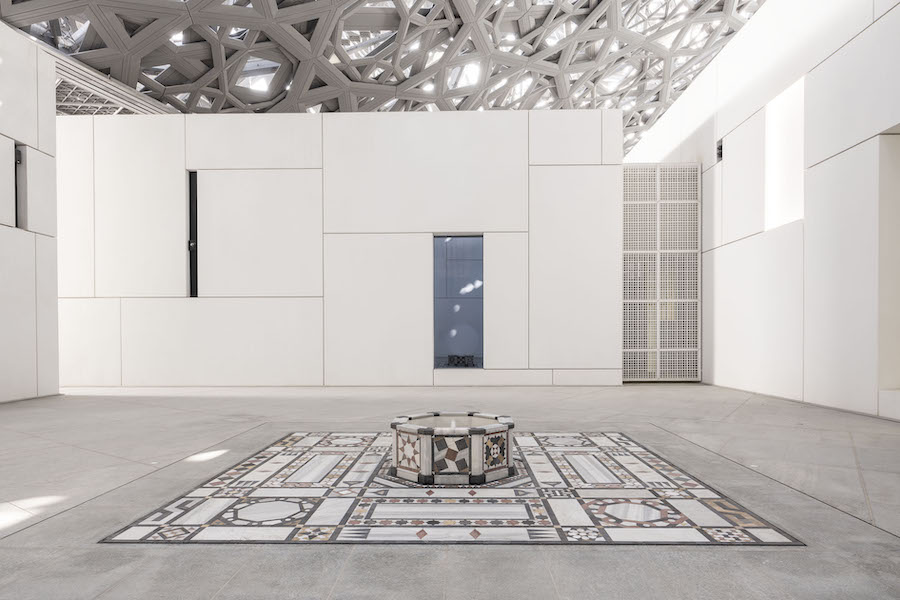DUBAI: The team at Louvre Abu Dhabi spent much of the summer enhancing the museum’s online collection, uploading images of 120 objects of major importance on its website for art enthusiasts to discover. Led by Faten Rochdy, the head of the resource center unit, this documentation project is a collaborative undertaking between the institution’s curatorial, scientific and research centre teams.
“Sharing and promoting the collection online has always been part of our vision and strategy. Having the collection online gives viewers a sneak peek into what they will expect to see at the museum,” Rochdy, who joined the Louvre Abu Dhabi a year ago, told Arab News.
The project actually began back in February 2019, but the abrupt arrival of the COVID-19 pandemic this year — which prompted the museum to close its doors to the public from March to June — was a game changer and accelerated efforts to make parts of the collection more accessible.

The Bohemian; Édouard Manet (1862-1867). Supplied
By the end of 2020, the aim is to make approximately 600 works of art digitally available for viewing. “It is a tool that is here to stay and will continue to be crucial in how museums connect with their audiences,” said Rochdy.
Each artwork in the online collection — whether it comes from the age of Egyptian antiquity or French modernism — is accompanied by a wealth of informative text and analysis, along with brief artwork details. All the information has been published in English, French, and Arabic. Unlike the first two languages, however, the nuanced nature of the Arabic language is not as developed when it comes to historical art and museography terminology, which is why Louvre Abu Dhabi is prioritizing this aspect of the project.
Of this linguistic challenge, Rochdy remarked: “For one term, you can have many translations and it depends on which public you are addressing. There is a hierarchy of terms, so maybe we can use a certain term on the database, but if we’re using it on social media we will use another term. There’s all this complexity that needs to be discussed.

Asuka Hill in the Eastern Capital, from the series Thirty-Six Views of Mount Fuji; Utagawa Hiroshige (1858). Supplied
“One of the most exciting projects that the scientific directory launched is a project called ‘Bil Arabi’ (In Arabic), which focuses on developing accurate translations for art- history terms,” she continued.
“The goal, in the long run, is to build a trilingual thesaurus of art-history terms based on research methodology. We are going back to references published in Arabic and comparing sources, and we really aim to have this thesaurus used as a reference tool and to ensure that the information in the three languages is accurate, consistent and fully up-to-date.”
Among the 120 selected masterpieces, there really is something for everyone to enjoy, ranging from painting to outdoor sculpture. There are works from the great masters Rembrandt and Bellini, artifacts of both historic and religious significance from Syria, Iraq, Japan, and Pakistan, as well as modern, contemporary works by Paul Klee, Jenny Holzer, Cy Twombly, and Saudi artist Maha Malluh. As Rochdy aptly puts it: “It’s a mirror of the Louvre Abu Dhabi’s narrative, representing all civilizations and many geographical areas through different periods of time across the four wings of the museum.”

Woman Dressed in a Woollen Garment; Central Asia, Bactria. Supplied
As seen on the website, one of the most remarkable architectural objects installed in the museum’s breathtaking outdoor areas is an 18th-century marble pavement and octagonal fountain hailing from Damascus. Meanwhile, from the works inside the museum, a well-known 19th-century figurative painting of a lively gypsy by French artist Édouard Manet and a centuries-old, central Asian statue of a small yet imposing woman dressed in a puffed woolen garment can also be explored online.
According to Rochdy, the ensuing phases of the project will feature more options for people to use when visiting the online collection. “We are still working on enriching the data. For example, we are working on artist biographies and implementing tools, filters, and hyperlinks to make data searchable and interoperable,” she explained.
As the global art world slowly opens up again, Louvre Abu Dhabi has, since late June, opened its doors to a quieter experience, with visitors required to wear facemasks at all times and maintain social distancing.







0 التعليقات:
إرسال تعليق